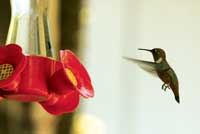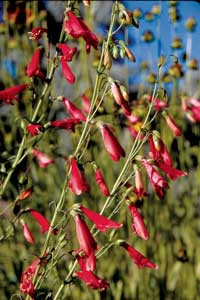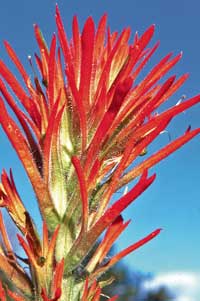September is a transition month in Canyon Country. Lupine pods snap open todisperse their seeds. Butterfly larvae look for safe places to overwinter. Hummingbirds continue their southward migration towards Mexico.
One of these species, the rufous hummingbird, migrates along mountain tops in the Intermountain West. This differs from their northward migration in spring when the birds move along lowlands and coastal areas where nectar-bearing flowers are first to bloom. But in September, a mountain meadow offers numerous wildflowers for the hummers to visit and refuel.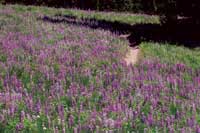
Black-chinned, broad-tailed, Costa’s, Anna’s, Calliope, and the rufous hummingbird are probable species one might encounter in southeastern Utah during the fall migration. Males move through first, followed by females and juveniles. Though the birds may use the same flyway, they don’t migrate in flocks, but as individuals.
Some birds pass through the Moab area in a day; others spend time refueling for the next leg of their migration which might end in Mexico or Central America. For a rufous hummingbird that summered in Cordova, Alaska, their migration could end up being over 2,000 miles long. Impressive for a bird that weighs just over one ounce.
Though small in stature, hummingbirds consume 1-3 times their body weight in food each day. That translates to a lot of nectar and insects for these birds which seem to be constantly on the move. Hundreds of flowers will be visited, and spider webs may be plucked clean by the hungry hummers.
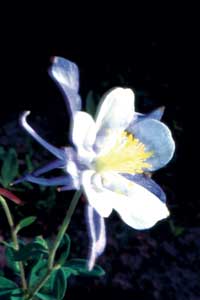
Even though the birds need to eat and rest on their migration, they take advantage of strong northerly winds to help propel them southward. If a cold front catches them on their route, the birds may enter into a brief stage of a hibernation-like condition called “torpor.” The hummingbirds can lower their body temperature up to 50 degrees which translates to a much slower heart and breathing rate. In turn, this reduces the need for constant fuel; otherwise the birds would be working extra hard to consume enough calories to maintain their normal body functions during a cold weather period.
Just like in the summer, migrating hummingbirds may supplement their daily dietary intake by visiting feeders set up with sugar water. At times, a swarm of hummers may gather around a feeder. Birders and gardeners know that offering late blooming flowers such as monarda, salvia, agastache, catmint, and snapdragons will also host a bevy of hummers.
As the birds probe a flower, they lap up the nectar with their long tongues. Early naturalists thought that the hummingbird’s tongue was like a straw, but later studies revealed the tongue to have groves on the sides which hold the nectar as the tongue is withdrawn into the bill. And when the light strikes a hummingbird just right, the brilliant iridescence of the bird’s throat feathers reflects their nickname of “flying jewels.”
Though many are content to enjoy hummers at feeders or in the garden, others participate in citizen-science projects that track both north and south movements. Journey North (www.learner.org) and World of Hummingbirds (www.worldofhummingbirds.com) are two Web sites where people can post sightings that contribute to the understanding and enjoyment of the hummingbird parade.

